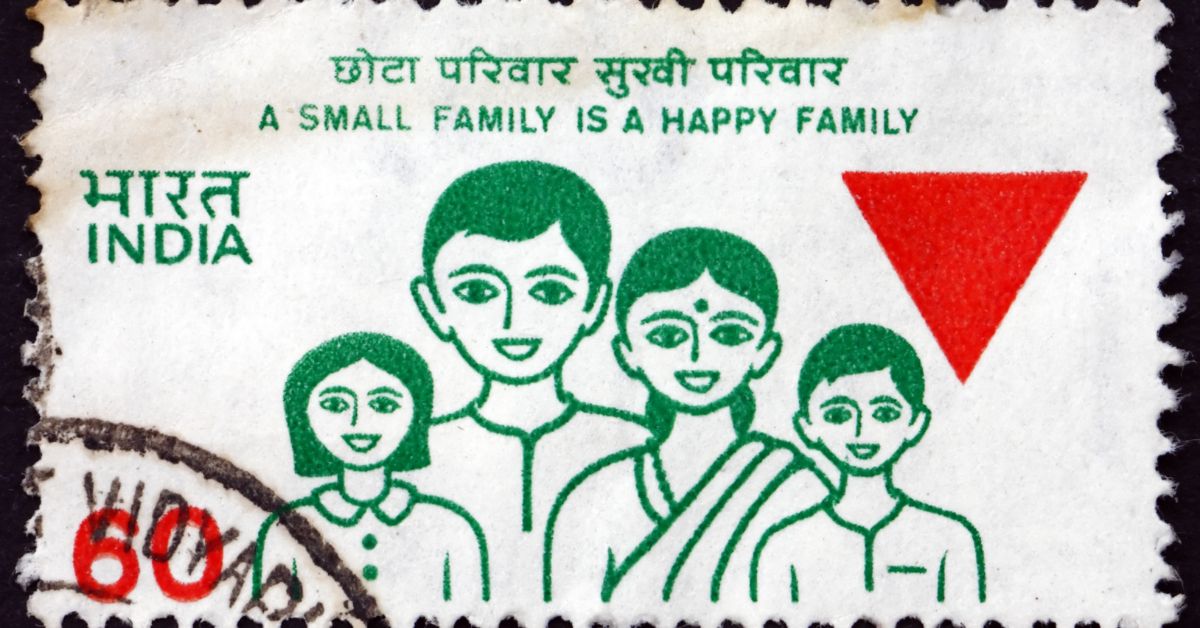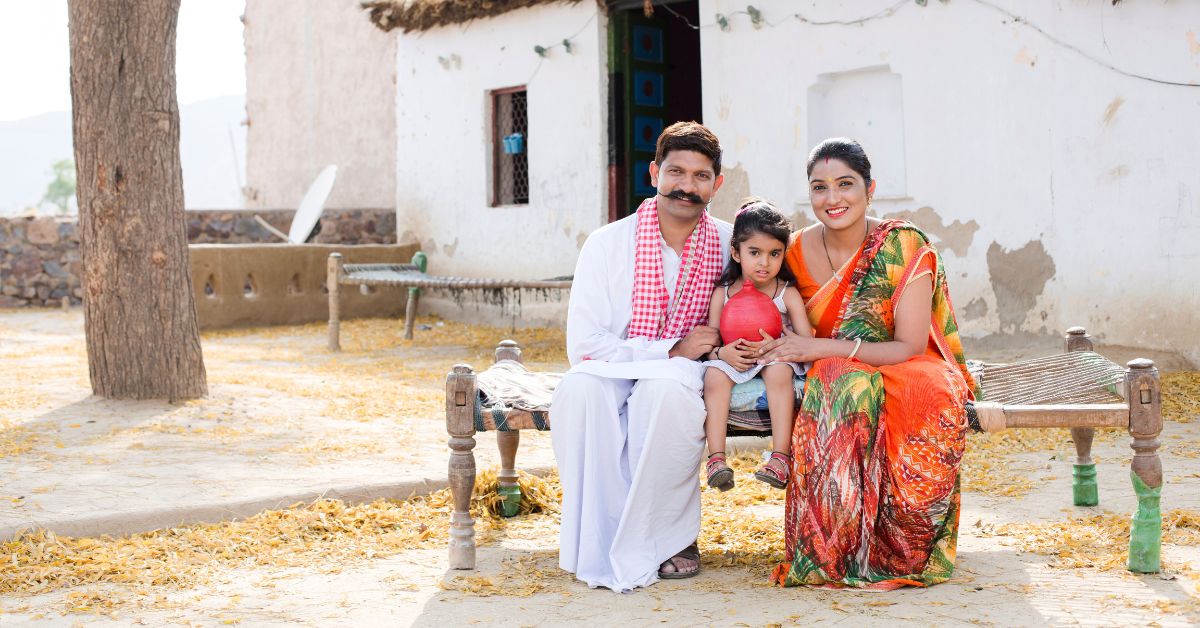About six years into their marriage, Rajesh Raman (name changed), a Mumbai-based finance professional and his wife Meera (name changed), a medical professional, began to seriously contemplate the idea of not having children at all. After deliberating on the matter for two years, they decided that Rajesh would get a vasectomy done. (Representational Image above courtesy Shutterstock/Ground Picture)
“We are probably among the few couples in this country who decided to take this step without having children. About six years into our marriage, we started discussing that maybe having children is not a part of our life goals. Besides my corporate job, I also work as a life coach in a startup I run with my wife. I work with more than 2,000 people on various issues like abuse, relationship management, career-life balance, etc,” says Rajesh, speaking to The Better India.
“To support our collective vision of creating a wider impact in society, we felt that maybe having our biological child is not a part of our plan. After deliberating on the matter, I got a vasectomy done in 2020,” adds the 37-year-old based in Mumbai.
Elaborating on their decision not to have children, Rajesh notes, “We believe that having a child is at least a 21-year investment of your time. As parents, you need to be able to dedicate a lot of your time and energy. As a parent, it’s your top priority to raise a child to be the best that they can be. It’s a tremendous responsibility and you need to do justice to it.”
But before arriving at this decision to not have children, Rajesh and Meera spoke to many people from academics to spiritualists who helped them understand that there are myriad ways of fulfilling the responsibilities of a caregiver other than becoming a biological parent.
“There are many ways to fulfil the duty of a caregiver besides being parents to a child. So, it’s not that we are running away from the responsibility [of becoming parents]. It is just that we seek to devote our responsibility and time to a wider set of people,” says Rajesh.
But on the subject of how to ‘seal the deal’ on their decision not to have children, Rajesh and Meera spoke to doctors and explored the various contraceptive options before them.
“There are some temporary and permanent options available. Funnily, the majority of the contraception options are diverted towards females like copper IUDs, oral contraceptives, etc. If they’re looking long term, women have to undergo tubal ligation, which is a cumbersome medical procedure, followed by a four-week average recovery time,” notes Rajesh.
“Vasectomy, however, is a simpler procedure with a faster recovery process. We did a lot of research and watched many testimonials online. We also spoke to a few doctors who have performed vasectomies and people who have undergone it. Taking into account their inputs, we felt that a vasectomy is the safest, most permanent and least complicated procedure with little to no side effects. This was also a medical decision besides a personal one,” he adds.

How did their parents and relatives react to this decision to get a vasectomy?
Over those two years [before getting a vasectomy], Rajesh and Meera had very open and transparent discussions with their respective families about the decision not to have children. Thankfully, their parents were completely aligned with Rajesh and Meera’s decision.
However, what surprised them was the attitude of the doctors. “When we went to a few doctors [urologists] who perform vasectomies, we were turned away,” explains Rajesh.
“First, they were not sure that we were a couple and asked us to furnish our marriage certificate because they had never heard of a young couple opting for a permanent sterilisation procedure without having children. Some doctors were of the view that we were trying to be ‘naughty’ here. We argued that this decision came after much deliberation and thought. After an extended search, we finally found a doctor who was ready to do the procedure,” he adds.
Rajesh’s experience with the vasectomy procedure
Speaking to The Better India, Rajesh describes his experience of getting a vasectomy.
“A simple vasectomy requires cutting off and sealing the vas deferens, which are the two tubes that carry the sperm from the testicles to the urethra, thus making it a permanent form of male birth control. The entire procedure can be done either on general or local anaesthesia. For my [with scalpel] vasectomy, I went with local anaesthesia. The procedure took about 15 minutes. It was very quick. I felt very little pain during the procedure,” adds Rajesh.
Rajesh had Meera, a doctor, witness the procedure since she knew the urologist.
“During the procedure, you may know when the doctor cuts your vas deferens because you feel a sensation. Similarly, when they’re sealing it off, you will again feel a certain sensation and not any sort of intense pain because you’re under anaesthesia. You’re then quickly stitched up and then put on a course of painkillers for the next four or five days,” he recalls, adding that post-procedure, he felt slight discomfort while sitting for a couple of days.
“I would recommend getting the procedure done on a Friday so that you get your weekend off. You can work from home on Monday, and on Tuesday, you are almost back to normal,” Rajesh says.
“Doctors ask you not to engage in sexual activity for a couple of weeks. The first time you ejaculate after the procedure, you might find a bit of blood but that’s no reason to get freaked out. It’s a very normal thing. After 60 days, you will need to do a sperm count test/semen analysis where the result should be zero. Doctors also do a biopsy of the piece of vas deferens that has been cut to ensure that they’ve got the procedure right,” says Rajesh.
While receiving the results of his sperm count test, Rajesh recalls a funny incident.
“Usually the report comes four hours after the test. So, I called the lab asking for the results and a lady on the other line of the phone said that my report had come out wrong and was unwilling to get into the specifics. Then my wife called and pressed her on the results. She was like, ‘Oh my god, I’m very sorry to say your husband’s sperm count is zero.’ That lady didn’t know that this was good news to us and she was relieved after my wife explained that a vasectomy had been done. We still get a nice laugh out of recalling this incident,” he recalls.
Getting men on board for contraception
One of the biggest problems with India’s family programme initiatives is that men are hesitant or unwilling to undergo a vasectomy, and instead, they put their wives/partners through longer, more difficult and more painful procedures that require a longer recovery period.
Poonam Muttreja, the executive director of the Population Foundation of India, says, “Family planning is a shared responsibility between partners. Involving men in family planning programmes can foster better spousal communication, promote gender-equitable attitudes, and increase the uptake of family planning methods. Despite this, India’s family planning programme shows a significant gap in male involvement. Currently, the public health system provides only two male-specific contraceptive options: condoms and male sterilisation (vasectomy).”
“Although the National Family Health Survey (NFHS) 5 (2019-21) data showed a significant increase in uptake of condoms (from 5.6% in 2015-16 to 9.5% in 2019-21), condoms and male sterilisation contributed only 17% and 1% respectively in the method mix. Although male sterilisation is a simpler procedure compared to female sterilisation, female sterilisation remains the most popular modern contraceptive method. The weightage of female sterilisation in total use of modern contraceptives for family planning was 67% in 2019-21,” she adds.

But why do Indian men remain hesitant or unwilling to undergo procedures like vasectomy?
As Poonam explains, “In many parts of South Asia, men do not participate in discussions and informed decision-making about family planning, and the onus is on women to use contraceptives. NFHS 5 data reveals that more than one-third (35%) of men believe that contraception is women’s business. This mindset has resulted in limited male involvement in family planning efforts.”
She adds, “Other contributing factors include limited awareness of sexual and reproductive health, insufficient knowledge about effective contraceptive methods, and the persistence of myths and misconceptions. Gender inequality, deeply embedded in cultural norms, continues to hinder effective male engagement in family planning.”
So, how do we overcome some of these barriers and get more men involved in contraception?
Shattering myths surrounding male contraception and vasectomies
In India, major myths and misconceptions surrounding male contraception, particularly vasectomy, contribute to its low acceptance.
“One prevalent misconception is that vasectomy leads to a loss of virility, libido, etc, despite medical evidence showing no impact on sexual function. Another myth is that the procedure is irreversible, whereas vasectomies are often reversible, with the success rates depending on timing and technique,” explains Poonam.
“Additionally, there is a widespread belief that family planning is solely a woman’s responsibility, reinforced by traditional gender roles. This has led to male sterilisation accounting for only 1%, compared to 67% female sterilisation in the method mix as per National Family Health Survey (NFHS-5) data, highlighting the stark gender disparity in contraceptive responsibility,” she adds.

In a 2019 conversation with The Better India, a gynaecologist and infertility specialist working for a private hospital in Bengaluru, said, “Nearly, the entire burden of the family planning programme is carried by women. This is because of social mindset, dubious claims that vasectomy reduces a man’s virility and ability to work, and a lack of other options.”
Speaking to The Better India, a Delhi-based urologist who wishes to remain anonymous says that men have the option of getting a traditional (with scalpel) and no-scalpel vasectomy. While both options are safe, he argues that no-scalpel vasectomy is the preferred choice.
“One of the safest, most painless, bloodless, and easiest modes of family planning is no-scalpel vasectomy for men. This procedure has no adverse impact on your sex life. You get the same enjoyment out of sex as you did earlier. If a surgery which takes a few minutes allows you and your family to secure themselves against unwanted pregnancies, a no-scalpel vasectomy is a great option. Also, a no-scalpel vasectomy is reversible. For some reason, if you and your partner want a child, a doctor can undertake a procedure to reverse its effects,” says the urologist.
Talking about his own experience, Rajesh states unequivocally that vasectomy does not affect his sexual activity. He says, “You don’t need to spend on condoms again. And you don’t need to plan when you can have sex. Getting a vasectomy has zero impact on your sex life.”
“In fact, I would say that getting a vasectomy has improved my sexual performance because I am in a better [mind] space. There is no reduction in the amount of enjoyment I can get from sex. You don’t feel any changes physiologically, and it’s 100% safe,” he adds.
Getting more men involved in contraception and family planning
So, how do we get more men involved in contraception and family planning?
Thus far, the Union Ministry of Health and Family Welfare has taken some steps to mainstream men’s role in family planning.
According to Poonam, these include, “Vasectomy fortnight (every November), installation of condom boxes at all levels of health care facilities, IIC/BCC campaigns to promote male contraceptives, counselling of men on contraceptives by involvement of ASHAs, distribution of Nayi Pehel kit containing condoms for newlyweds, and organisation of the Saas Bahu Pati Sammelan to promote male engagement under Mission Parivar Vikas programme.”
These initiatives have increased awareness and demand for family planning. But there is much more to be achieved to realise gender equity fully and shared responsibility in family planning.

“Addressing stereotypes and encouraging men to view family planning as a shared responsibility requires a comprehensive approach. Public health systems, family planning programmes, and communication strategies must be tailored to promote male involvement actively. By engaging men as equal partners in family planning, we may unlock a critical pathway to driving meaningful change in the country,” argues Poonam.
“A sustained effort in behaviour change communication, combined with active on-ground engagement with men, is essential while promoting women’s rights and decision-making autonomy. The focus should be on shifting mindsets and addressing stereotypes to empower women in making informed health decisions, while also fostering open communication between spouses. It’s crucial to initiate these efforts early by engaging adolescents in discussions about sexual and reproductive health and rights. Additionally, strategic engagement is needed to encourage men to consider vasectomy as a viable family planning option,” she adds.
How do we get there?
Poonam notes, “It is important to understand that male engagement intervention needs a multi-sectoral approach. Education, age at marriage, health-seeking behaviour, and socio-cultural norms need to be addressed simultaneously and concurrently.”
Here are two steps she recommends:
- Frontline health workers (ASHAs, ANMs) must be supported and male health workers must be added to supplement the existing workforce.
- Given the Government’s present emphasis on strengthening counselling at hospitals, an increased thrust on couples counselling and follow-ups is likely to bear fruit.

“The Government’s effort to engage male peer educators as part of the RKSK (Rashtriya Kishor Swasthya Karyakram) programme is a move in the right direction,” she says.
“Lastly, the involvement of other stakeholders, including civil society organisations and private partners, to involve men in this process needs to be underlined. Innovative ways to ensure this under existing PPP (public-private partnership) and social franchising models will positively impact health and family planning at the community level,” she adds.
Why is male participation crucial in family planning?
Rajesh believes that if you already have a child and you don’t intend to have another, getting a vasectomy is a must so that you can move on in life.
“If you have decided not to have children at all, my suggestion is to take 18 months as a couple to discuss this in honest detail, do the research, talk to experts, understand what it is to be a parent and have those delicate conversations with your family. Once you are clear about this decision, get the procedure done and move on ahead,” he argues.
Having said that, Poonam notes that the discourse on the engagement of men as partners in accessing family planning and health services needs to go beyond contraceptive use.
“Male participation is about being responsible and respecting equality rather than just about decision-making. It should extend to the role of men as enablers and beneficiaries in the process of ensuring dignity, equal voice, and reproductive rights for women. Male participation should not mean that women’s decision-making powers are encumbered, and women are forced to accept men’s choices,” she argues.
“Studies reveal that men often control contraception decision-making and decision of contraception of female partners, particularly in the context of the prevalence of intimate partner violence, which can impede contraceptive use as well as increase the risk for contraceptive failure. Male engagement in family planning should improve men’s and women’s reproductive health and promote gender equality and women’s empowerment,” she adds.
(Edited by Pranita Bhat; Images courtesy Shutterstock)
No comments:
Post a Comment